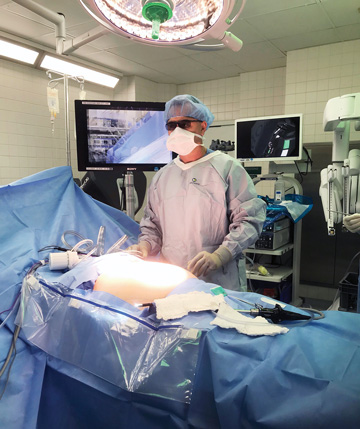Surgeons sometimes obsess over screen size, so fixated on a monitor's diagonal length that they overlook the 3 P's: positioning, proximity and pixels. Yes, size is important, but not as important as your physicians might have you believe.
Unless you're doing extremely complex procedures like neurosurgery, you don't need a giant 65-inch 4K wall monitor. Plus, unless you're outfitting for a futuristic hybrid OR, you're dealing with standardized screen sizes to begin with, says Suraj S. Soudagar, MS, MBA, LEED AP, associate principal and project executive with IMEG Corp., a healthcare engineering firm in Naperville, Ill.
For wall monitors, most vendors offer screens between 50 inches and 58 inches. There are some 60-inch surgical monitors out there, but not many.
As a rule-of-thumb, surgical planners say wall-mounted OR monitors are nearly twice as large as the screens suspended from booms or sitting on carts in the surgical field. The range inside the field varies depending on image quality. Most HD monitors today are 26 inches, which is up from the 20- to 24-inch HD monitors that dominated the market just 5 years ago, says Mr. Soudagar.
Most 4K monitors are 32 inches, though there are some decent quality 30-inch 4K monitors, says Mr. Soudagar. And 32 inches is the largest screen size you're likely to see in the surgical field for a very simple reason. "It's the maximum weight that can be borne by the arms that hold up the monitors in the surgical field," says Mr. Soudagar. With the creation of lighter monitor panels, we may see the surgical field displays going up to 36 inches — "but that is unlikely any time soon," adds Mr. Soudagar.
Another consideration is space. Most ORs are already crammed with equipment. Jumping from a 26-inch HD monitor to a 32-inch 4K screen might not seem like much, but when you're talking about already cramped quarters with precious little free space, that small amount can impact the flow during surgery, says an expert in integrated workflow solutions. Even minor increases in screen size can take your surgeons and staff some getting used to, he says.
.svg?sfvrsn=be606e78_3)

.svg?sfvrsn=56b2f850_5)